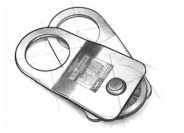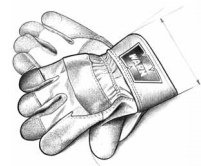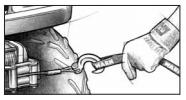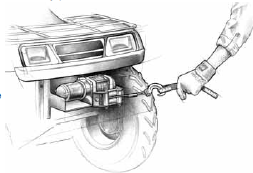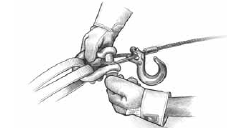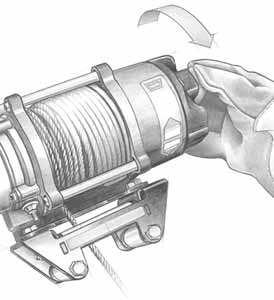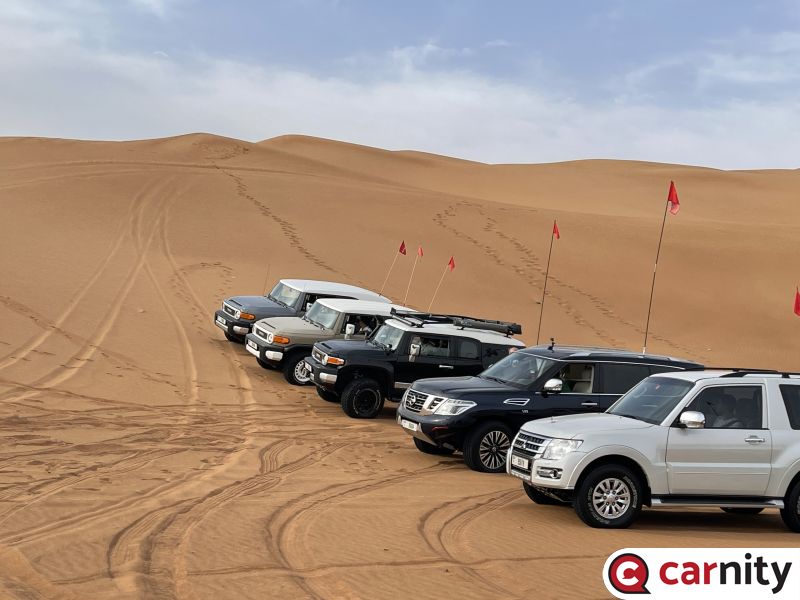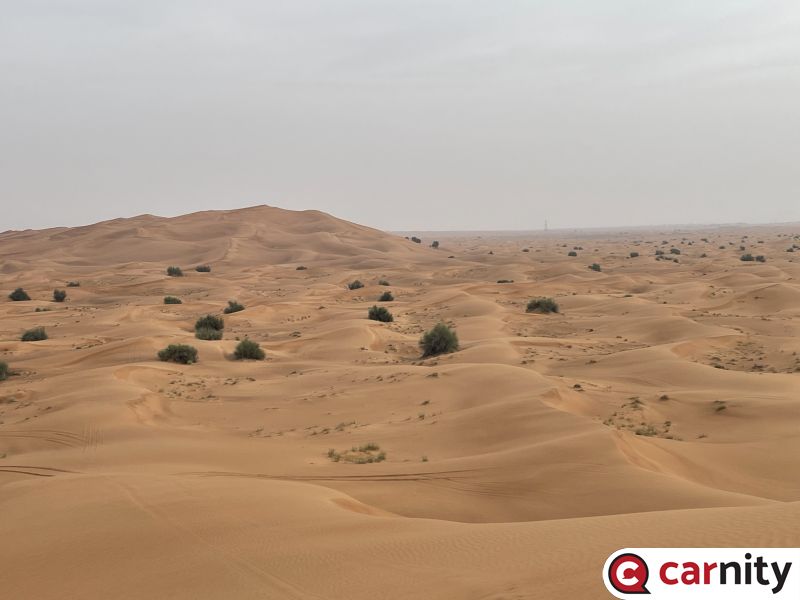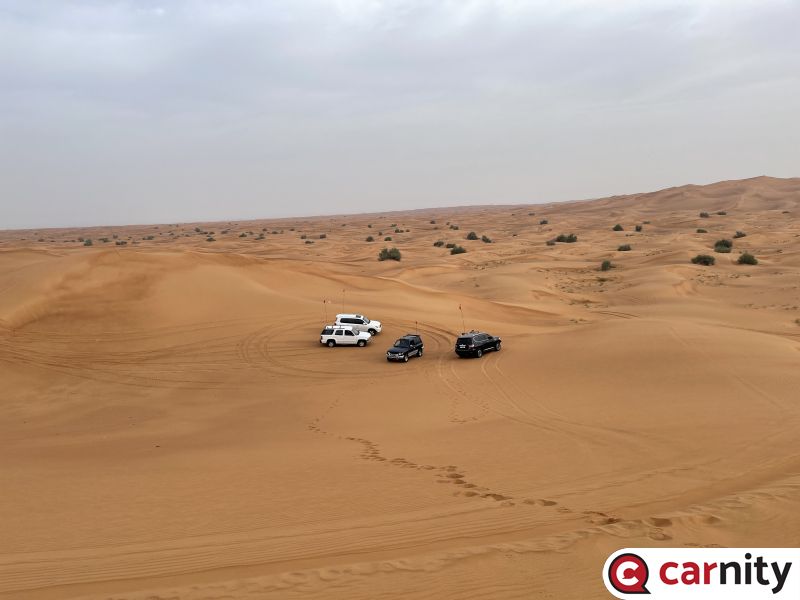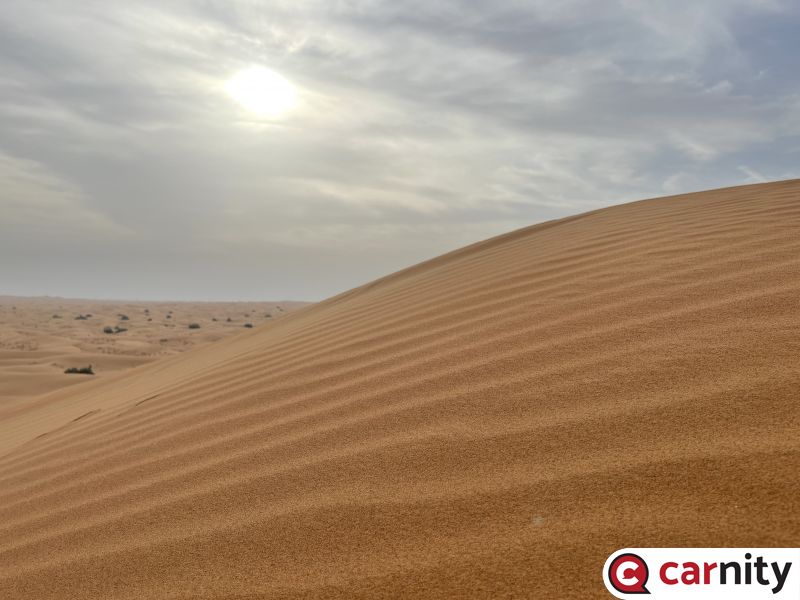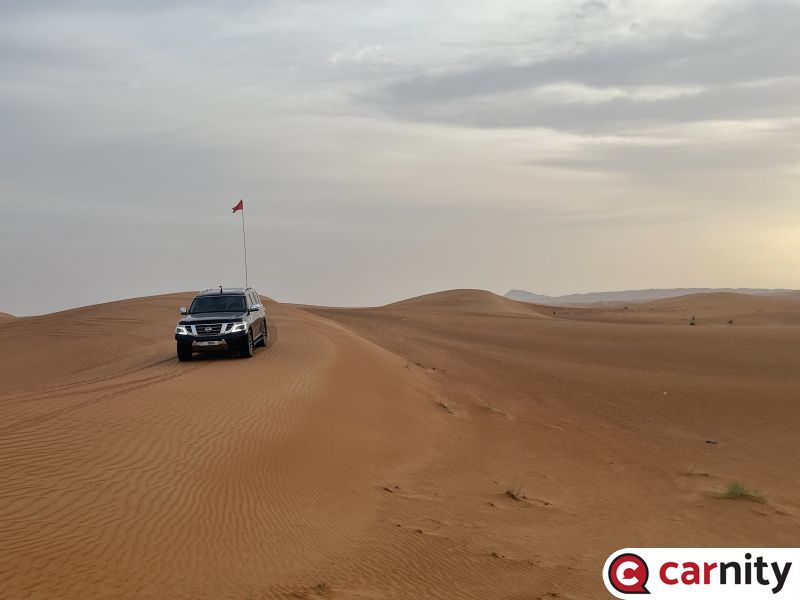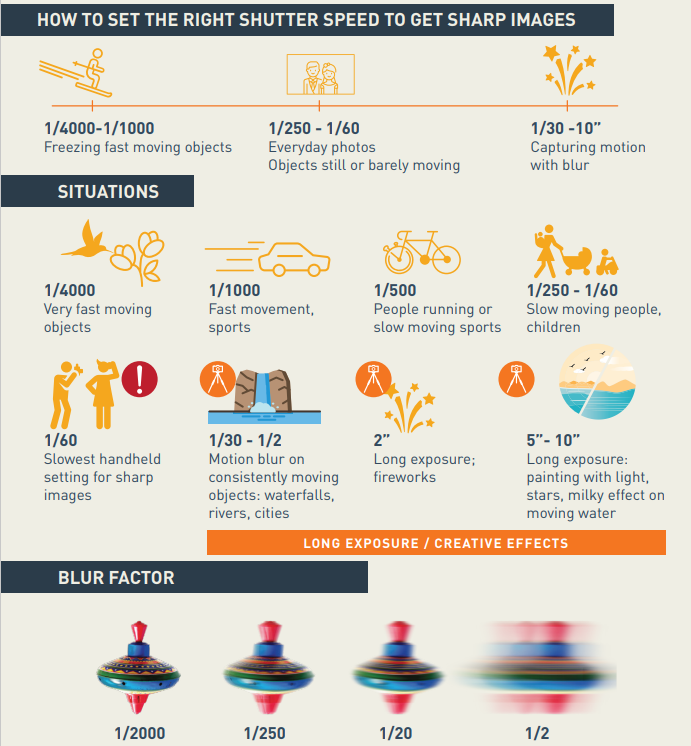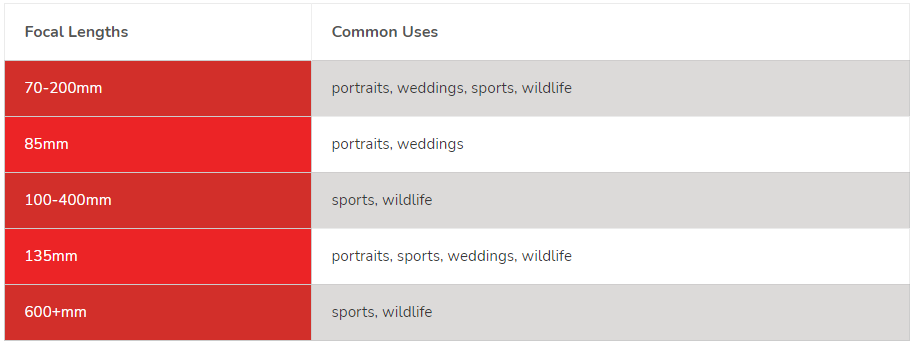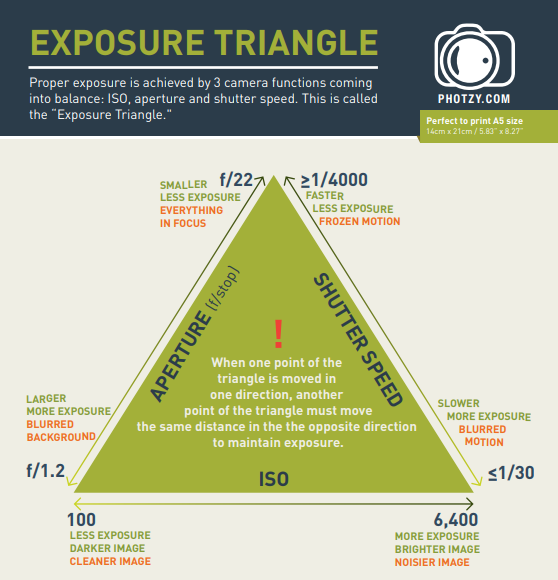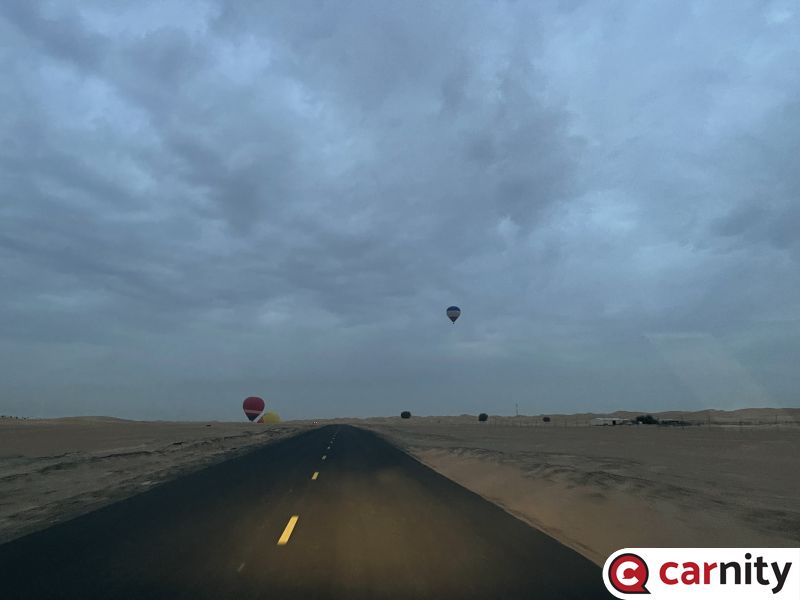-
4.9 Stars ⭐⭐⭐⭐⭐ 452 Google Reviews
-
Posts
7,094 -
Joined
-
Last visited
-
Days Won
295 -
Country
Belgium -
Carnity Points
5,434 [ Donate ]
Content Type
Profiles
Forums
Advice
Business Listing
Car Deals
Recall
OBD II Car Diagnostics
Guest lead capture
STORE
Events
Gallery
Blogs
Everything posted by Frederic
-
untilDrive Details Level: Newbie and Above When: 14 May 2021 Meeting time: 5:30 AM SHARP - Without any exceptions) Meeting Point: Across 2nd December Cafetaria: https://goo.gl/maps/kvVJzR6LQ89gbvjG8 Offroad Tools: Shovel, Programmed radio, Pressure Gauge/ Tyre Deflator, Offroad Flag What else to bring along: Loads of water, snacks (for yourself), face mask, rubber gloves, enthusiasm and willingness to learn. Approximate finish time: 10:00AM THIS IS A COMPRESSOR ONLY DRIVE. PLEASE DO NOT SIGN UP FOR THIS DRIVE UNLESS YOU HAVE A COMPRESSOR. ANYONE ARRIVING AT THE DRIVE WITHOUT A COMPRESSOR, FLAG, PROPER SHOVEL AND DEFLATION KIT WILL NOT BE ALLOWED TO JOIN THE DRIVE. ALL TOW POINTS WILL BE CHECKED BEFORE DEPARTURE.
-
This drive is organized in full compliance with the COVID19 guidelines. We expect every member that joins this drive to go through below information and and strictly follow these guidelines in order not to jeopardize someone's health, and to ensure we can keep organizing these drives safely. MUST READ AND TOTALLY AGREE: COVID19 Precautions Two Way Radio Guidelines Every Offroader brings his own radio, programmed to the frequencies described in below advice topic. We will not share spare radios or program your radio on the drive. If you need assistance in programming the radio, post a topic on the Carnity website with your questions and we will help you out. Make sure your radio is fully charged. It will be your only way of communication while driving. Before buying, please carefully read below advice so you are informed properly on which model / cost / shops... No radio = No drive. It is an essential tool and you should make sure you bring it on every drive and learn/practice how to use it. DRIVE DESCRIPTION: Newbie Level Drive with emphasis on learning to cross dunes in more technical terrain. Drive Details Level: Newbie and Above When: 14 May 2021 Meeting time: 5:30 AM SHARP - Without any exceptions) Meeting Point: Across 2nd December Cafetaria: https://goo.gl/maps/kvVJzR6LQ89gbvjG8 Offroad Tools: Shovel, Programmed radio, Pressure Gauge/ Tyre Deflator, Offroad Flag What else to bring along: Loads of water, snacks (for yourself), face mask, rubber gloves, enthusiasm and willingness to learn. Approximate finish time: 10:00AM THIS IS A COMPRESSOR ONLY DRIVE. PLEASE DO NOT SIGN UP FOR THIS DRIVE UNLESS YOU HAVE A COMPRESSOR. ANYONE ARRIVING AT THE DRIVE WITHOUT A COMPRESSOR, FLAG, PROPER SHOVEL AND DEFLATION KIT WILL NOT BE ALLOWED TO JOIN THE DRIVE. ALL TOW POINTS WILL BE CHECKED BEFORE DEPARTURE. LIMITED SPOTS AVAILABLE: Limited to 12 cars only. RSVP will close on Thursday - 9 AM. If the RSVP is full and you wish to join, please mention your name on the drive thread to add on the waiting list. Latecomers will be returned back - without ANY EXCEPTIONS. Members without RSVP will be returned back - without ANY EXCEPTIONS. Please withdraw your RSVP, if you aren't joining, so your spot can be taken by others. Repeated no-show members after RSVP will have their account suspended for a month. IMPORTANT THINGS TO REMEMBER You will not be accepted on the drive without your offroad tools as listed above. Your radio is essential, make sure it is programmed beforehand. Follow the COVID rules as described, any violations will result in a ban from the club. We do not accept latecomers to the drive. PLEASE RSVP ON THE BELOW CALENDAR
-
This tutorial is aimed at providing you a basic understanding of your winch and the proper way of using it, with an emphasis on safety. As every winch recovery is different, it is impossible to describe every possible scenario. But with providing you the basic techniques you will be able to understand how to operate your winch, and in the case of an assistant/buddy , know what to do when assisting during the recovery process. The main important aspect of winching is to THINK through each situation BEFORE jumping into action. Applying a bit of common sense goes a long way and remaining calm is ESSENTIAL. WHICH ACCESSORIES SHOULD I HAVE Hook Strap The Hook Strap is used to hold the hook and keep fingers away from the fairlead as the rope is being spooled in. Snatch Block The multi-purpose snatch block allows you to: (1) increase your winch’s pulling power. A double line rope pull will halven the load on your winch. (2) change your pulling direction without damaging the rope. Rope gloves Having proper gloves is essential to perform winching. On a steel rope you can easily cut yourself, while with a synthetic rope there is risk of burning your hands if you hold on to the rope. D-Shackles or Soft Shackles Will be used to connect your winch to the object that need to be winched. If your winch has a hook, then you can use the hook directly. WORDS OF CAUTION -Never attach a recovery/kinetic rope or strap to the winch hook to increase the length of a pull. Use a Winch Extension Strap. -Never operate winch with less than 5 wraps of rope around the drum. Rope could come loose from the drum, as the rope attachment to the drum is not designed to hold a load. -STAY CLEAR FROM THE ROPE AT ALL TIMES WHEN IT IS UNDER LOAD. STRETCHING YOUR WINCH ROPE FOR THE FIRST USE The life of a wire rope is directly related to the use and care it receives. Tensioning the wire rope is critical to ensure a long product life. Tensioning the wire rope will prevent outer layers of wire rope from pinching and deforming the inner layers. During its first use, a new wire rope must be spooled onto its drum under a load of at least 500 lbs. (227kgs). Use the following instructions toproperly stretch the wire rope onto the winch drum: BEFORE YOU PULL Practice using your winch before you get stuck. A real situation is no time to be learning how to use your winch. Whether you’re recovering another vehicle or pulling a stump from the ground, knowing the proper winching techniques can help keep you and others around you safe. And perhaps the most important part of the winching process, regardless of the situation, is what you do BEFORE you pull. 1. Always take your time to assess your situation and plan your pull carefully. 2. Always take your time when using a winch. 3. Use the right equipment for your situation. 4. Always wear gloves and do not allow the rope to slide through your hands. 5. You and only you should handle the rope and operate the remote control switch. 6. Think safety at all times. 7. Practice. Practice and practice the steps. RIGGING FOR THE PULL The following steps describe how to recover your vehicle with rigging a single line pull. Double or multiple line rigging techniques follow the same basic steps,but use a snatch block to assist the process. Step 1: PUT ON GLOVES. Step 2: DISENGAGE CLUTCH. To allow free spooling of the winch drum, rotate the clutch lever on the winch to Disengage. Freespooling conserves battery power. Step 3: FREE THE WINCH HOOK AND ATTACH HOOK STRAP. Free the winch hook from its anchor point. Attach hook strap to the hook (if not attached). Step 4: PULL ROPE TO THE STUCK VEHICLE Pull out enough rope. Be sure to keep certain amount of tension in the wire as it can become twisted and overwrap when slackened, leading to rope damage. To prevent loosing the end, hold the winch hook in the hook strap while you work. Step 5: SECURE TO THE STUCK VEHICLE. Use Soft Shackles or a rated D-Shackle. Step 6: LOCK THE CLUTCH. Lock the winch drum by rotating the clutch lever on the winch to Engage. Step7 : CONNECT THE REMOTE CONTROL. Be careful not to let the remote control cord dangle in front of the winch. Always disconnect the remote control when not in use. Step 8: PUT ROPE UNDER TENSION. Using the winch switch, slowly wind the rope until no slack remains. Once the rope is under tension, stand well clear, and never step over it. Step 9: CHECK THE VEHICLE THAT WILL BE PULLED. Communicate with the vehicle owner about your course of action, and ask him to put the vehicle in 4LO. Do a last inspection of the connection before starting the pull. Step 10: CHECK ROPE. The ropeshould be neatly wound around the spooling drum. Improper winding can cause damage to the rope. Step 12: LAY SOMETHING OVER THE ROPE, if you decide it is necessary, midway between the winch and the anchor point to absorb energy should the rope snap loose. A winch dampener can be used, or a heavy jacket might also do the trick. Step 13: MAKE YOUR INTENTIONS CLEAR. Be sure that everyone in the immediate vicinity surrounding the winching operation is completely aware of your intentions before you pull. Declare where the spectators should not stand — never behind or in front of the vehicle and never near the rope or snatch block. Your situation may have other “no people” zones. Step 14: BEGIN WINCHING. With the winching vehicle’s engine on and light tension already on the rope, begin winching slowly and steadily. Be sure that the rope is winding evenly and tightly around the spooling drum. The vehicle may be steered while winching but not driven. Driving vehicle causes rope to become slack and entangled. It is advisable to winch in "blips" by pushing the button for 2-3 seconds, followed by a pause of 5-10 seconds. This helps to keep the winch motor cool and during this time you can keep inspecting if the rope loops well on the winch or if no damage is occuring to the stuck vehicle. The stuck vehicle can also give gently blips of throttle to help the recovery process. During recovery of another vehicle, it is not advisable to keep the winching vehicle in (P) Park, as this causes a huge load on the transmission and might even damage the transmission. Use your handbrake, stay inside the vehicle, and keep your brake pedal pressed in hard. Use the remote to control the winching process, and have a buddy standing on a safe distance to act as a spotter. Use your radio to communicate with the stuck vehicle and your spotter. SOME LAST HINTS: A winch is very powerful, yet you should ALWAYS try to reduce the stress of the recovery, by deflating the stuck vehicle further down, and shoveling/creating a path where the vehicle can drive out with assistance of the winch. So make sure the wheels are free and can freely rotate. A winch recovery should always be done straight, and not under an angle as this will severely increase the risk of damage to the rope or stuck vehicle. If you need to pull from an angle you can use a snatch block. When you have finished the recovery, make sure to spool the rope back to the winch properly, by having 1 person to keep the rope under tension with his body weight, and another person to guide the rope back into the winch by guiding It from left to right, so the winch is rolled up evenly along the surface of the drum.
-
We are truly blessed with having another trip lead. @Islam Soliman you bring again another flavor to our members, and it’s a flavor we all love: the route from Tawi Nazwa to BR has lots of existing tracks. To my surprise and delight you took us into areas none of the other marshals have taken so far, and with a perfect pace you gave us time to make our way to Big Red. From there you scaled it up and created excellent challenges for all and the ability to rev up our engines in order to try to follow that mighty black Yukon of yours. As a second lead one of the tasks is to correct the lines where needed, but I hardly had to do that, which says a lot about your drive skills you have built through your numerous drives with us. I carried a massive smile all morning from following your throughout the dunes. Many more drives will follow !
-

EB4AD59A-3959-4550-B928-F726945983C9.jpeg
Frederic posted a gallery image in Fewbie - Pink Rock - Sharjah - 7 May 2021
-

2E7596AA-D1F6-486E-ADD5-8DE353808F42.jpeg
Frederic posted a gallery image in Fewbie - Pink Rock - Sharjah - 7 May 2021
-

A20503BB-734D-4924-AB4D-C7675E2EBFE5.jpeg
Frederic posted a gallery image in Fewbie - Pink Rock - Sharjah - 7 May 2021
-

9A5457DB-D49C-4788-9790-E220A0A49856.jpeg
Frederic posted a gallery image in Fewbie - Pink Rock - Sharjah - 7 May 2021
-

F300CE61-F9D5-4F41-81EC-D7FF9E2F65D2.jpeg
Frederic posted a gallery image in Fewbie - Pink Rock - Sharjah - 7 May 2021
-

F31DD59C-3EF0-46FD-89A4-58F705F835C0.jpeg
Frederic posted a gallery image in Fewbie - Pink Rock - Sharjah - 7 May 2021
-

Digital Camera - Absolute Beginner Guidelines
Frederic replied to Frederic's topic in Lens Lovers Club's Discussions
So far with my 5D Mark2 and Samyang 14mm i got the best results around 25 seconds shutter speed. You can use the 500 rule to determine which is your recommended shutter speed and we will have plenty time to experiment with the settings. -

Digital Camera - Absolute Beginner Guidelines
Frederic replied to Frederic's topic in Lens Lovers Club's Discussions
As many people don't have a remote shutter release, i would recommend using the shutter speed presets. Furthermore i think not every camera has the "B" Bulb setting. On top of that, if you exceed 30 seconds shutter speed, you will start to have some trailing effects, which is great if you want to experiment with that. -
Operating a Digital Camera sometimes feels like controlling a spacecraft, and on top of that, thinks like aperture, shutter speed, ISO, and many other technical descriptions seem very confusing, which leads to 90% of DSLR users to choose their AUTO modes and fear of ever using anything else. This is perfectly normal, but with some basic guidelines and understanding you can quickly overcome this hurdle and start shooting stunning photos. Like every hobby, it needs a bit of patience and research, but the advantage of shooting digital is that you won't have to waste any money in developing "mistaken" photos that were part of the learning experience. If you took a wrong photo, just delete it and move on For Astrophotography, you will need to select "MANUAL MODE" on the rotary dial of your camera so you can set the shutter speed, aperture, and ISO yourself. There are many misconceptions about photography, and one of them being that you need to spend thousands of dirhams to get professional looking photos, but that is simply not true. With any decent brand (Nikon, Canon, Sony, Fujifilm, etc..) digital camera you will be able to take amazing photos as long as you practice and learn to understand how the camera works and how you should be using light, composition, etc.. to accentuate the end result. Our club has focused so far on night photography only, which is in some kind of way no too very difficult because you are not taking portraits of living/moving things, don't have to worry about shadows, and have enough time to experiment with your settings while your camera is mounted on a tripod. Having said that, it will need a bit of practice in setting up your camera and understanding of the different settings, and learning about the 3 main things your camera has to deal with: 1) APERTURE Aperture means how much will the lens be opened to capture the photo you will take. Just like your own eyes which will open more in a dark environment, a lens has an aperture setting that you can control to open or close the lens more in order to achieve a photo that is not over-exposed nor under-exposed. As you can see above, the lower you set your aperture value, the more light that will enter the lens, which is what we need for night photography. You will find the aperture specifications on your lens, for example a prime lens of 28mm / f1.8, or a kit lens of 50mm with f4.0. On top of that, the aperture will also control your DOF, or depth of field. Now if you like to take a nice portrait that has that beautiful blurry background, you will need to use a low aperture setting like f/1.4 or up to f/2.8. For night photography this is not an issue 2) SHUTTER SPEED Now, it is one thing to open your lens, but the second thing is to tell the camera how long the lens should remain open before closing again. The longer it will remain open, the more light that will be captured, which is what we want for night photography. While for action shots of your kids playing football you will need a very short shutter speed to avoid the picture from getting blurry, for night photography and capturing the stars you'll want to keep the shutter open for as long as possible. This will be somewhere between 15 and 30 seconds based on your lens, camera, and other factors. 3) ISO ISO is the level of sensitivity of your camera to light. The lower the ISO number, the less sensitive it is to the light. The higher the ISO number, the more sensitive it is to the light. For night photography you can increase the ISO level up to 3200 and more, depending on your camera and lens capabilities. Understanding and experimenting with these 3 above-mentioned things here will get you already on the way to make stunning photos of stars. A few other things to look into are: RAW vs JPEG JPEG is the typical compressed file format that delivers nice images for sharing, just like MP3 for music. However it creates certain limitations as well. Due to the fact the file is being compressed, it cannot be altered properly afterwards. Hence if you want to optimize your night shots afterwards in with software like Adobe Lightroom or others, you will need to shoot in RAW mode. This is the mode that creates a large file that is uncompressed and which will allow you to make a lot of changes later on. Most cameras have a setting called JPEG+RAW, this means every time you click a photo it will save a RAW file and a JPEG file on your memory card. White Balance Setting You can keep it on AUTO MODE, or experiment with different white balance presets, like Tungsten which might work better at night. If you are planning to optimize the photo in Lightroom afterwards, then the AUTO setting should be fine. https://astrobackyard.com/white-balance-astrophotography/ To get used to your camera and its different settings and functionalities, you can head over to Youtube where you'll find thousands of tutorials: https://www.youtube.com/results?search_query=richard+bradbury+500d LENSES Last but not least, every photo being taken is passing through a lens, and there are many different lenses on the market, from the "general use" kit lens that came with your camera, to the professional tele-lenses that have a massive zoom. We will just describe the most common lenses below: 1) Kit Lens: This is an economic lens that came with your DSLR, has a fair bit of zoom, for example 55-105mm, with a standard aperture of f/4.0. They can be used for many purposes and is a good allrounder. 2) Prime Lens: A prime lens has a fixed focal length, for example 50mm, so you cannot zoom with it. The good thing is due to the fact that these lenses do not have the magnifying components inside, they are cheap and most have very good aperture, for example a typical Canon 50mm / f1.8 lens is very cheap to get and will deliver fantastic portraits with nice blurry background (also called bokeh). You will generally find them in 28mm, 35mm, 50mm. 3) Tele-lens: These are the lenses you'll see on sport events from where professional photographers need to zoom in a lot, while keeping a stable image. These are expensive, big, heavy lenses that will have O.I.S (Optimal Image Stabilization) on board to make sure the image remains stable when zooming in that much. 4) Wide-Angle Lens: This is a lens often used in astrophotography, as it gives a very nice wide angle view on the night sky and is able to capture a lot of information. A typical wide-angle lens would be anything from 14mm to 28mm, with an aperture of f/2.8 or even lower. They are also popular amongst people who take photos in real-estate business and will make a tiny hotel pool look like a massive olympic swimming pool Finally, it is important to understand the balance and correlation between aperture, shutter speed, and ISO, as they are interconnected as you can see in below triangle: I have attached a full collection of Snap Cards, a Photography for beginners tutorial, and some specific cheat sheet for astrophotography. Good luck ! Specific settings for astrophotography (courtesy of Mikhail Lukichev): select RAW mode decrease brightness of the screen to minimum disable long exposure noise reduction disable high ISO noise reduction select manual focus mode turn on live-view zoom in the picture in the live view mode select manual shooting mode (M) disable auto ISO set ISO to 3200 set shutter speed to 15sec set aperture to minimum (f1.8 - F3.5) set manual white balance to 3200-3500K 1905255335_Snap_Cards_Full_Collection(4).pdf Photography for Beginners (3).pdf night-sky-cheat-sheet-new (2).pdf
- 5 replies
-
- 11
-

-

-

-
Hahahaha calling in @Gaurav on this one. I have seen few replicas (normal gen2 pajeros that have got the bodykit installed) here in Dubai. But also heard a story of a guy that was able to buy a real Evolution straight from the Habtoor showroom (could be fake story). These are legendary Pajeros that are now real collectors items and won about everything back in the days Mitsubishi was conquering the Paris Dakar races. Another mythical story is that this Pajero would easily do things that even a Raptor could not do.... 🤐
-

Darren Thompson has been promoted to Fewbie level
Frederic replied to Gaurav's topic in Off-Road Club's Announcements
Congrats @darren thompson ! -

Dune Crossing Tutorial and Techniques
Frederic replied to Frederic's topic in Off-Road Club's Discussions
Hi @PaoloMaraziti this is a very good question. Coming off the dune in the way you describe is completely correct, and indeed the "entering into sidesloping" can be done successfully as long as you keep the appropriate momentum. Be aware that this also depends on how soft the sand is on that side. If you are crossing from the hard side of the dune onto the slip face (soft side) then that continuation of sidesloping will be more difficult as the sand will have the tendency to drag you down immediately. -
Happy birthday @Srikumar !!
-

A10F2AC7-3BF4-425F-BCC6-EB51865788AD.jpeg
Frederic posted a gallery image in Newbie - Faqa to Solar Park - 30 Apr 2021
-

Angela (Foxtrot Oscar) has been promoted to Marshal level
Frederic replied to Gaurav's topic in Off-Road Club's Announcements
Absolutely deserved @Foxtrot Oscar !! You’ve overcome every single obstacle you were faced with with Bravoure. See you soon in the sand !! -
RSVP IS NOW CLOSED Please find your convoy positions above. We will be using CHANNEL 2: 446.03125 Mhz The Faqa terrain is beautiful, but can be very challenging at the same time. We will be crossing through some very complicated technical terrain, so adequate distance inbetween the cars will be necessary. Seniors on the drive are @Shaaz Shaand @Kailas who will be helping you out in case we have stucks and refusals, which i hope we will have a few and practice self recovery skills Please arrive before 6AM so you have ample time to put up your flag and deflate. Mandatory tools will be your pressure gauge, programmed radio, shovel, and a flag. Be aware that you will not be accepted on the drive without these items. Keep your distance during deflation, and abide by the COVID rules we have outlined in the topic. Let's keep it safe for everyone please. I am looking forward to this drive as this is my favorite area and i am sure we'll have lots of fun ! See you tomorrow morning !

